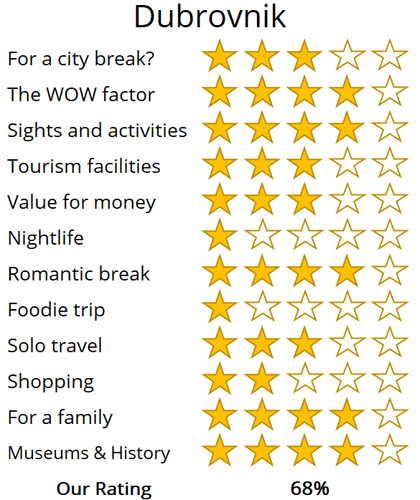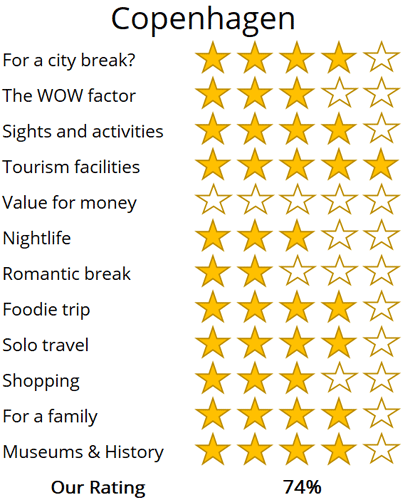WhereToGoForMyHoliday.com
The best destination comparison site!
WhereToGoForMyHoliday.com
The best destination comparison site!
Dubrovnik or Copenhagen, which is better for your holiday in 2024?
Dubrovnik and Copenhagen both offer unique and enticing experiences, but which one should you choose for your city break or holiday?
We recognise the difficulty in making this decision. While there is abundant information available on both destinations, clear guidance on which city better aligns with your travel preferences is often hard to find.
This article aims to provide an impartial comparison of Copenhagen and Dubrovnik, and hopefully help you to choose the best city to visit.
The article is structured into several sections, each of which can be directly accessed through the following links:
• Introduction to the cities
• Scores and ratings
• Which one should I, friends, or family visit?
• When to visit and weather
• Who is the city suited for?
• The perfect 48hours (with map)
• Tourism details (where to stay? airport details?)
Introduction to Copenhagen and Dubrovnik
Dubrovnik, a jewel of the Adriatic, beckons modern travellers with its sublime blend of medieval charm and contemporary allure. Encircled by iconic stone walls, this UNESCO World Heritage site offers a timeless journey through cobbled streets and baroque buildings, each telling tales of a rich, turbulent history.
Yet, beyond its historical treasures, Dubrovnik embraces the present with open arms, offering a plethora of chic restaurants, trendy boutiques, and vibrant nightlife. The stunning coastline, dotted with pristine (stone) beaches and crystal-clear waters, provides a tranquil escape from the city’s bustling heart.
For the discerning traveller seeking a blend of culture, history, and natural beauty, Dubrovnik stands unrivalled—a truly captivating destination.
Sleek yet historic, gritty yet creative, Copenhagen fuses all the contradictions of Scandinavia in one outstanding city.
Yes, it's pricy. But your money buys quality in these parts, whether that's the crispy Danish pastry in the morning, the single-origin coffee beans, or those craft beers in the independent drinkeries.
Once the home of Hans Christian Andersen, the city's Indre By – the historic core – is all weaving cobbled lanes and flower-strewn cottages from centuries gone by. Meanwhile, over in districts like Christianshavn and Vesterbro, there's a buzz and energy about proceedings.
Don't forget that this capital is the veritable home of New Nordic cooking, putting foraged foods and mind-boggling flavour combos front and centre…

The canals and traditional houses of the Nyhavn district (Copenhagen) are always a favourite with tourists
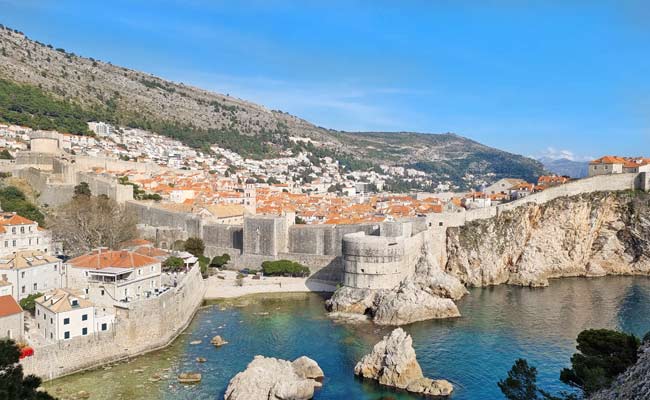
Dubrovnik is one of the most picturesque cities in Europe, so long as your happy to share the experience with thousands of other tourists.
High-level summary for Dubrovnik and Copenhagen
Summary
Where would I journey for a personal escape?
Dubrovnik
Where would I send my parents for a memorable visit?
Copenhagen
Where's the ideal destination for my adventurous 19-year-old cousin?
Dubrovnik (Copenhagen is too expensive for him!)
Where should my food-obsessed friend indulge their culinary passions?
Copenhagen
Note: The above comparisons are weather-independent and are based on travel during the most opportune times of the year. Details about the ideal travel seasons are elaborated upon later in this article.
In the sections that follow, you'll find a comprehensive comparison between these two fascinating cities. This includes recommendations on the duration of stay, the best times to visit, and tailored 48-hour itineraries for each city.
The final segment delves into practicalities for your travels, such as the best airport to fly into, the optimal districts for your accommodation, and insider tips, for when you come to explore the city.
We hope that you find all of this information useful, in planning your next exciting trip!
Destination details
How long to spend each city?
Choosing how long to spend in Dubrovnik really depends on what you want out of your city break. A fly-in whirlwind tour of the Old Town can be great if you're on the hunt for culture and history. The museum collections of the Sponza Palace and the Rector's House, walking routes of the City Walls, and sightings of landmarks like Large Onofrio Fountain can all be packed into just a day or two.
But it might be best to allow a little extra time. With all the castles and churches here, it's easy to forget that Dubrovnik is an Adriatic riviera destination at heart. You've got pine forests, olive groves, rakija distilleries and the lost-paradise island of Mljet to think about. You certainly won't want to rush those during the warmer months, so consider staying a week or more to explore the city itself and those stunning surroundings.
There are two sides to Copenhagen. There's the side that most visitors will aim to see, and that's all neatly packaged up for a quick two- or three-day break. Then there's the more local side. That can take weeks, or even months to enjoy to the fullest.
The upshot is that everything from short fly-in city breaks to longer jaunts are doable in the Danish capital – there's enough to keep you going, provided you've got the money to keep going!
In addition, it's worth thinking about what out-of-town excursions you might want to do from Copenhagen. These will inevitably add some time to the trip but are also downright tempting.
The likes of the ancient Viking capital of Roskilde, and the Swedish city of Malmo, are both on the menu.
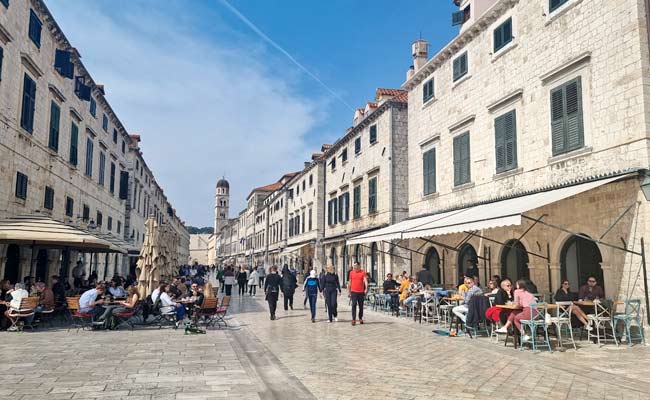
The Stradun is the characterful main street of Dubrovnik

Tivoli Gardens theme park, in the centre of Copenhagen is the second oldest theme park in the world, and was original constructed in 1850 with the aim of "when the people are amusing themselves, they do not think about politics”
Copenhagen's weather often surprises visitors, being neither as bleak as they may assume nor as cold as it is frequently lumped together with its neighboring Scandinavian countries.
Summer is Copenhagen's most beloved season, and the city emerges from its casing of snow and ice to become a real outdoorsy gem. In the capital, this means the canal-side cafes of Christianshavn come alive with al fresco drinkers, and the breweries expand into leafy gardens. This is also the time to enjoy the famous Brygge Harbour Bath and the other marina swimming spots in full swing.
Spring and autumn are good alternatives, particularly if you're on a tight budget. Already high prices can soar in Copenhagen during the summer months.
Winter offers its own charm, peaking around Christmas when the Tivoli market fills the air with the aromas of gingerbread and spiced wine. January, although cooler, is more economical and often adorned with a captivating blanket of snow.
Summer might seem like the perfect time to put together a trip to Croatia's castle city. However, temperature highs in the low 30s and strong midday sun can make things a little tiring. And that's not even mentioning the whopping great big crowds. Recent protests by Dubrovnik's locals have really highlighted the problem of summertime tourism – there's hardly an inch to move in the Old Town, especially when huge cruise ships are docked at port.
Things might improve thanks to recent laws barring any more than two large vessels per day, but we still think September and October come up trumps. This southern corner of the Balkans stays pleasantly warm well into the autumn, so you shouldn't have to worry about having the weather to laze on Lapad Beach. What's more, visitor numbers, hotel rates, and flight prices all plummet following the end of the summer vacations.
If you're one for enthralling tales of warring republics and battles with the Ottomans, Dubrovnik has you covered. If you're the sort who loves jaw-dropping European old towns with enough castles and churches and cobbled alleys to keep you going for a whole trip, it's also perfect.
Oh, and Dubrovnik takes care of globetrotters who come in search of a little Mediterranean sand, sun and sea. You won't have to venture far to find a cove to swim in, a yacht charter, or even a remote island villa where you can crank up the R&R.
If you're not big on crowds, then summer trips (as noted above) to Dubrovnik are surely best avoided. And it's hardly the place for anyone in search of big-metropolis vibes. For a city, Dubrovnik is relatively small and compact.
Copenhagen is tailor-made for creative, 30s-something city slickers. Bohemian cafes meet cutting-edge beer halls and restaurants that are breaking the mould, while workshops, design studios, and galleries cram the old town. If you're culturally engaged and enjoy places that fuse the old and the new, you could hardly do any better.
Copenhagen is famously expensive. Expect to pay around the 60kr mark (€8/$9) for a beer in most places – and even that's a decent deal! Hotels will cost a lot, no matter the season, and eating out is off the cards for anyone on a shoestring budget.
You can mitigate that if you picnic and dodge the pubs, but it's not really the place for travelers watching the pennies.
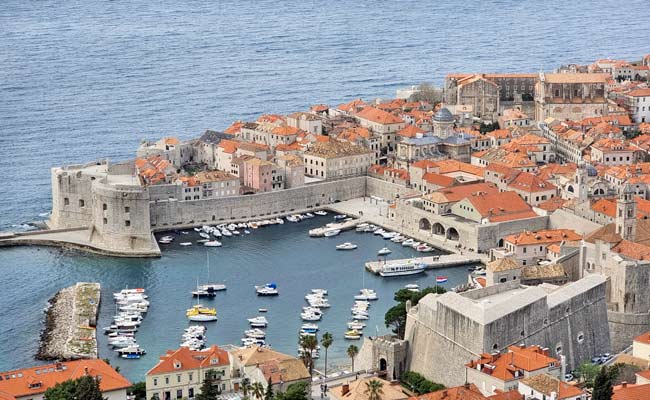
The pretty harbout of Dubrovnik

Grand Rosenborg Castle, was built as a summer residence by Frederik II in 1624, and today houses the royal treasury and displays the Danish crowns
48hours in Dubrovnik
Hopping from crenulated towers overlooking the Adriatic Sea to hidden local swimming spots to soaring summits in the Dinaric Alps, this fun-filled 48 hours could just be the perfect introduction to this awesome city:
Day 1: Start – where else? – on buzzy Stradun. The main artery of the Old Town of Dubrovnik, it runs from the port to Pile Gate (a 16th-century stone gatehouse that's worth a photo stop), passing Irish pubs, coffee joints, and Croatian konoba (taverns) as it goes. Sip a cappuccino and devour a pastry there before making for the Large Onofrio Fountain.
An elaborate water feature that's stood since the 1430s, it still dispenses crystal-clear water for drinking. Fill the bottle and then move to the iconic City Walls. These can be traversed entirely.
You can choose to do them on a guided tour (a Game of Thrones tour is available) or by yourself. In all, the whole stroll takes around two hours from start to finish, covering two kilometres of fortifications that include glimpses of famous citadels like Fort Minčeta (1319) and the dungeon-like Fort Revelin (now home to an EDM nightclub – remember that for later!).
For the evening, retreat to the legendary Buža Bar. It gazes straight out southwards across the Adriatic Sea. You can watch locals diving from the rocks into the water as you sip your sundowner beer.
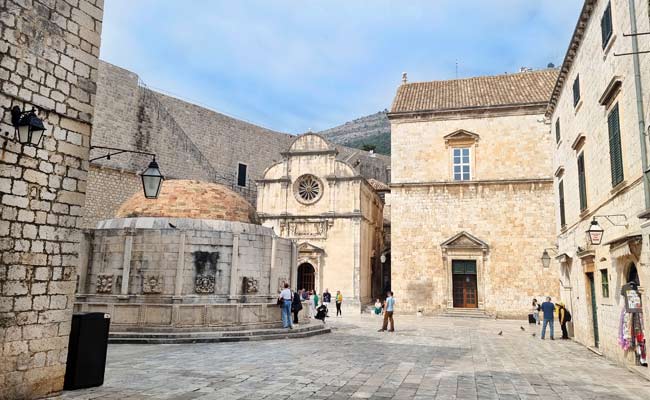
The Onofrijeva fountain and the towering city walls of Dubrovnik
Day 2: Kick start the day with a dip in the Med at Banje Beach. This is the closest beach to the Old Town of Dubrovnik and has a free section where you can take a quick swim while gawping at the high fortresses overhead.
Cafés and gelato shops line Frana Supila just above it, where you can grab a bite for breakfast before making for the base station of the Dubrovnik Cable Car – it's less than 500 metres away. Tickets might cost 170 HRK (€22) apiece, but the sweeping 180-degree views from the top station of Mountain Srd are simply awesome.
You'll be able to see the red-tiled roofs of the Old Town below, the wooded crags of Lokrum Island, and the remote Elaphiti Islands (perfect day outings by boat if you have some more time to spare) beyond.
Return to ground level and then hop on a bus going over to the Lapad Peninsula. This is great for the evening. A quick splash in the sea can be followed by uber-fresh seafood dinners with crisp Croatian wine in the traditional taverns just by the bay.
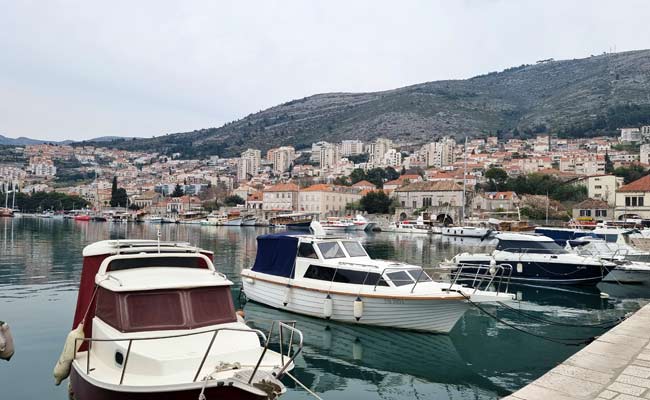
The New Town of Dubrovnik is centred around the harbour
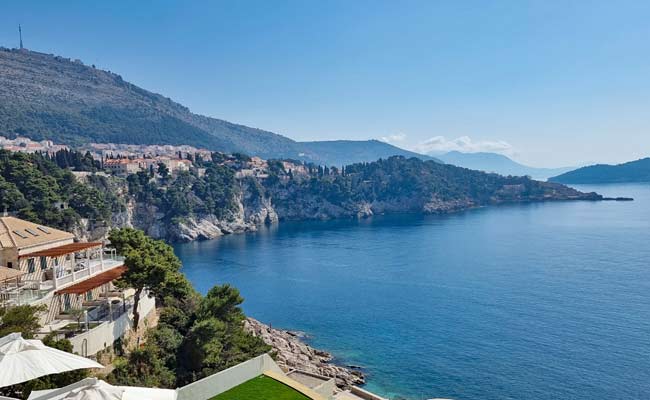
The dramatic coastline to the west of Dubrovnik Old town
Copenhagen offers so much for a fun-packed 48 hours. Below is an interactive tour map - day 1 is highlighted in green and day 2 in yellow.
Day 1: Begin the first day in the Rådhuspladsen, where the ochre-tinged walls of the City Hall dominate the skyline. This is a beating hub of the city, and you might find concert stages or markets taking place on the plaza. The bustling shopping street of Strøget starts here. Hit that to move between high-street retailers and lively pubs. The walk will take you all the way to Nyhavn.
This is a charming, historic area with 17th-century canals. The painted houses are a favourite with photographers, and you can opt to do a canal boat tour from the docks. Lunchtime is over in the Bridge Street Kitchen. Sprawling across Greenlandic Trade Square, it's a casual food mecca, with hotdogs mixing with falafel pitas and sourdough pizza breads.
Full? Good – Christiania awaits. This gritty artist community come squat is a unique bohemian commune. There are some pushy drug dealers and lots of tourists, but it's worth a stop. The spire of the lovely Church of Our Saviour is sure to pull you down to one end of the area, before hopping back over to Slotsholmen for a sighting of the grand Christiansborg Palace, the home of the Danish parliament.

The side streets of the Latin Quarter (Latinerkvarteret) are a joy to explore
Day 2: If it's sunny, there's never a better way to kick-off a day in Copenhagen than down on the marina. Free to enter and bustling with life, the Brygge Harbour Bath lets you swim in the refreshing waters of the Baltic Sea right in the heart of town.
Dry off and then grab a Danish pastry on your way up to the Indre By, where you can get lost in weaving lanes of cobblestone. The vast Rosenborg Slot sits at the far end of the district. A mighty palace from the 1600s, it's packed with art and can take a few hours to explore.
Nearby Torvehallerne will do nicely for food, with its array of local Scandi dishes. A hop across the water to hipster Nørrebro is great if you're craving a beer or a coffee – Brus is a good option.
Then head back south to Frederiksstaden district. It's crowned by the Rococo Amalienborg Palace, sports stunning churches, and buts up to the old town, where you'll find loads of bars and eateries to cap off the evening.

Christiansborg Palace is the Danish Parliament building along with the official residence of the Prime minister
You'll want to arrive and depart from Dubrovnik Airport if you're coming on a quick city break. It's located just over 15 kilometres from the heart of the city. Shuttles run regular routes from the Old Town and the Kantafig bus interchange to the airport terminals. The journey takes around 45 minutes to an hour in good traffic and costs between 35-55 HRK, depending on the operator you choose.
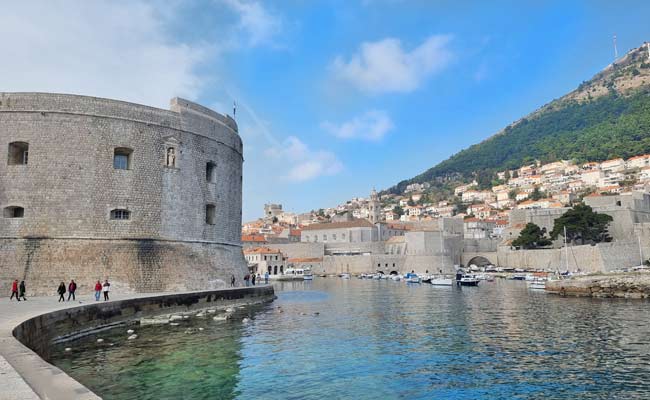
The entrance to Dubrovnik harbour
Dubrovnik is a super walkable city. In fact, getting lost in the Old Town area is one of the best things to do here. Don't go thinking you can use the City Walls to navigate. The ticket for those costs 200 HRK (€29) and is only valid for a single entry.
To get back and forth from districts around the Old Town and the beaches of Lapad and beyond, there's an efficient local bus network. Virtually all routes will either take you to the historic heart of Dubrovnik or terminate at the main Kantafig station. You can purchase fares onboard for 15 HRK but they're a little cheaper if bought from a kiosk in advance.
Try to seek out a place to stay as close to the Old Town as you can if you're coming to see the history sights and enjoy the walking tours. Remember that the district is super compact, so boutique B&Bs with cosy rooms are the name of the game within its boundaries. For extra space and proximity to the Adriatic Sea, you could look to the larger hotels and guesthouses around Banje Beach or Gruz to the north.
The infrastructure of Copenhagen is amazing, and you will leave wondering why other cities struggle so badly…
The impressive and uber-efficient Kastrup Airport is the gateway to Copenhagen. A mere 6km from the center, you can hop from the terminals to the downtown by train in just 15 minutes or so. Use either the direct lines or metro links. Tickets are purchased on the station platforms and cost in the region of 36 DKK.

Copenhagen city hall and the Rådhuspladsen, the main plaza of the city
Copenhagen has many hotels and accommodation options, but the city has one of highest occupancy rates of Europe (a yearly average of 81%). That means booking early is key. We'd recommend trying to score somewhere in the Indre By area.
The old core, it's close to all the main sights. If you're on a tighter budget, going north to Nørrebro might offer a few extra deals. Meanwhile, the Vesterbro district is an up and coming area, which is trendy and a touch edgy. Frederiksstaden is a more refined and contains many of the smarter hotels.
If you want to get around like a real CPH local, then there's nothing for it but to rent a bike. These are cheap and easy to find in pretty much any area of town. A full day's cycling should cost around 150 DKK (£22).
Copenhagen is a very safe city, especially for a capital. People are often eager to help and there are good public services in general. Be more wary if you're venturing off the beaten track. Certain corners of Nørrebro and Christiania can be sketchy, particularly after dark.

oh we were stuck in the airport!

Copenhagen was a bit expensive...

All we did was drink beer in Brussels...

Muncih was crazy

And we got so burnt!

Remeber that night in Rome

oh we were stuck in the airport

So much fun kayaking

Berlin and that group from Austria!

There was such a view from that church

And we got so burnt!

Munich was eventful, wasn't it!

Such a view from that cathedral in Florence

Lisbon was such so much fun

Last summer was so much fun .... x

Remeber that night in Rome

Lisbon was such so much fun

Such a view from that cathedral in Florence

Munich was eventful, wasn't it!

And we got so burnt!

Remeber that night in Rome

All we did was drink beer in Brussels...

Berlin and that group from Austria!

Can't wait to go back to Dubrovnik

Remember that boat ride in Prague

Copenhagen was a bit expensive...
